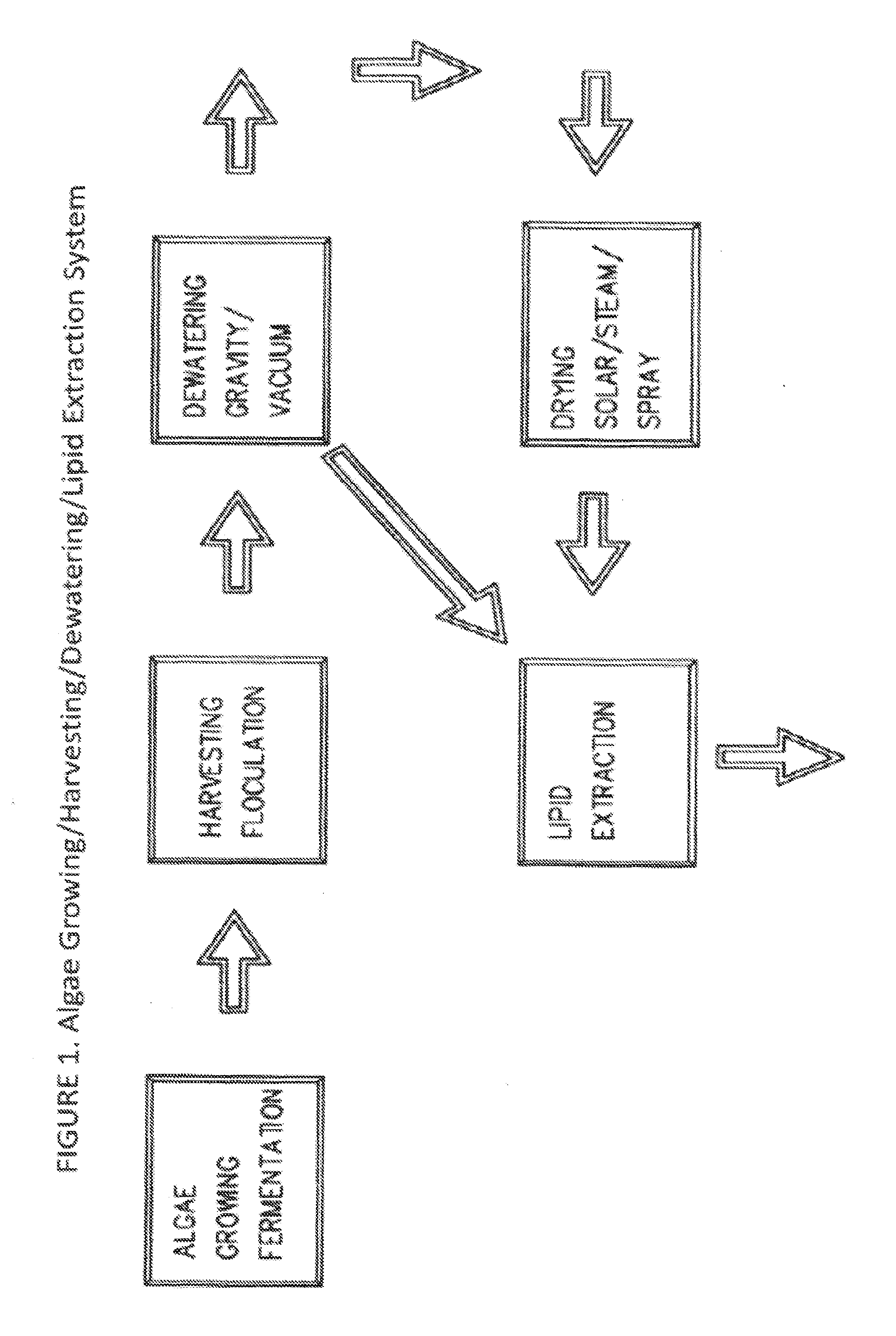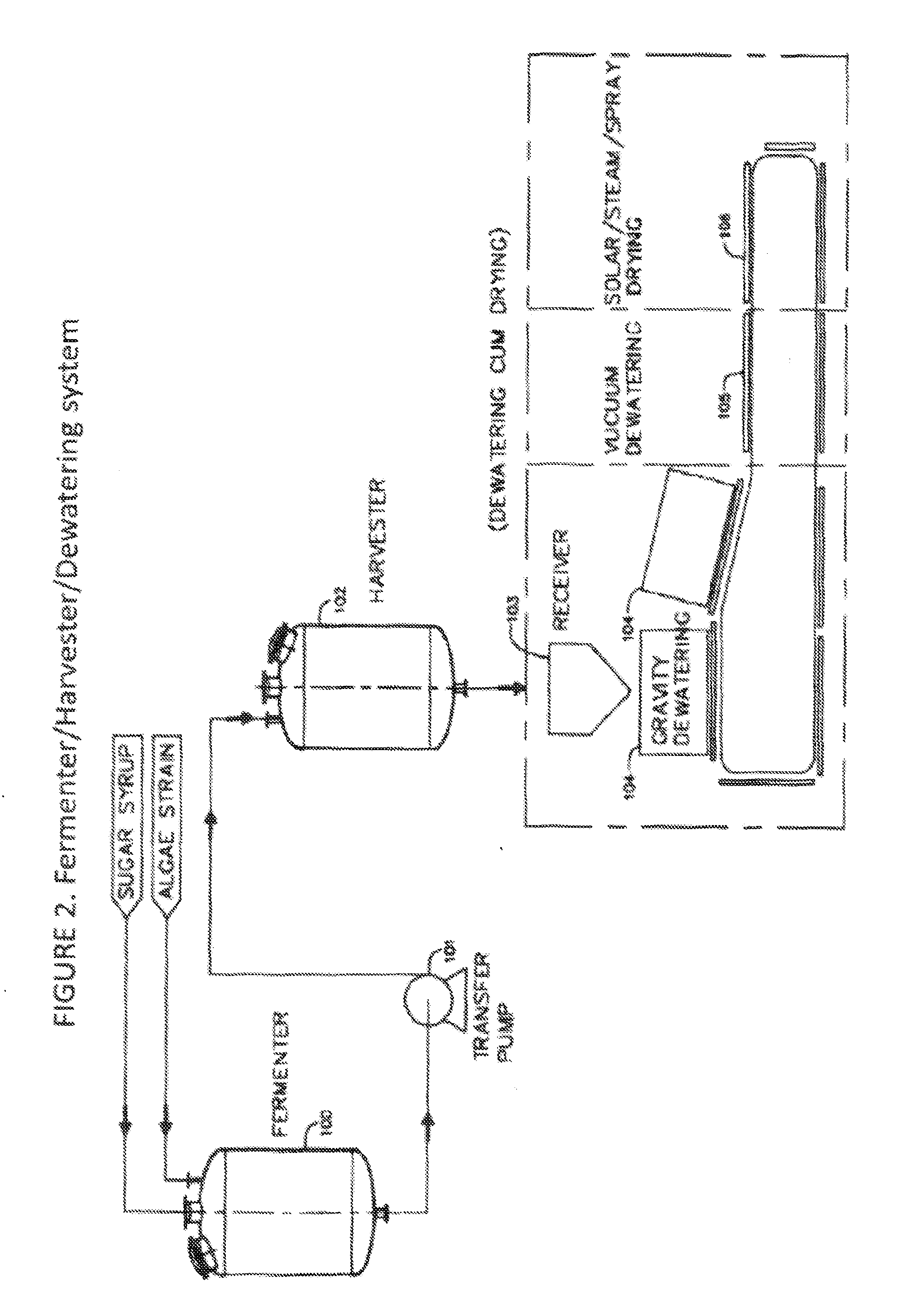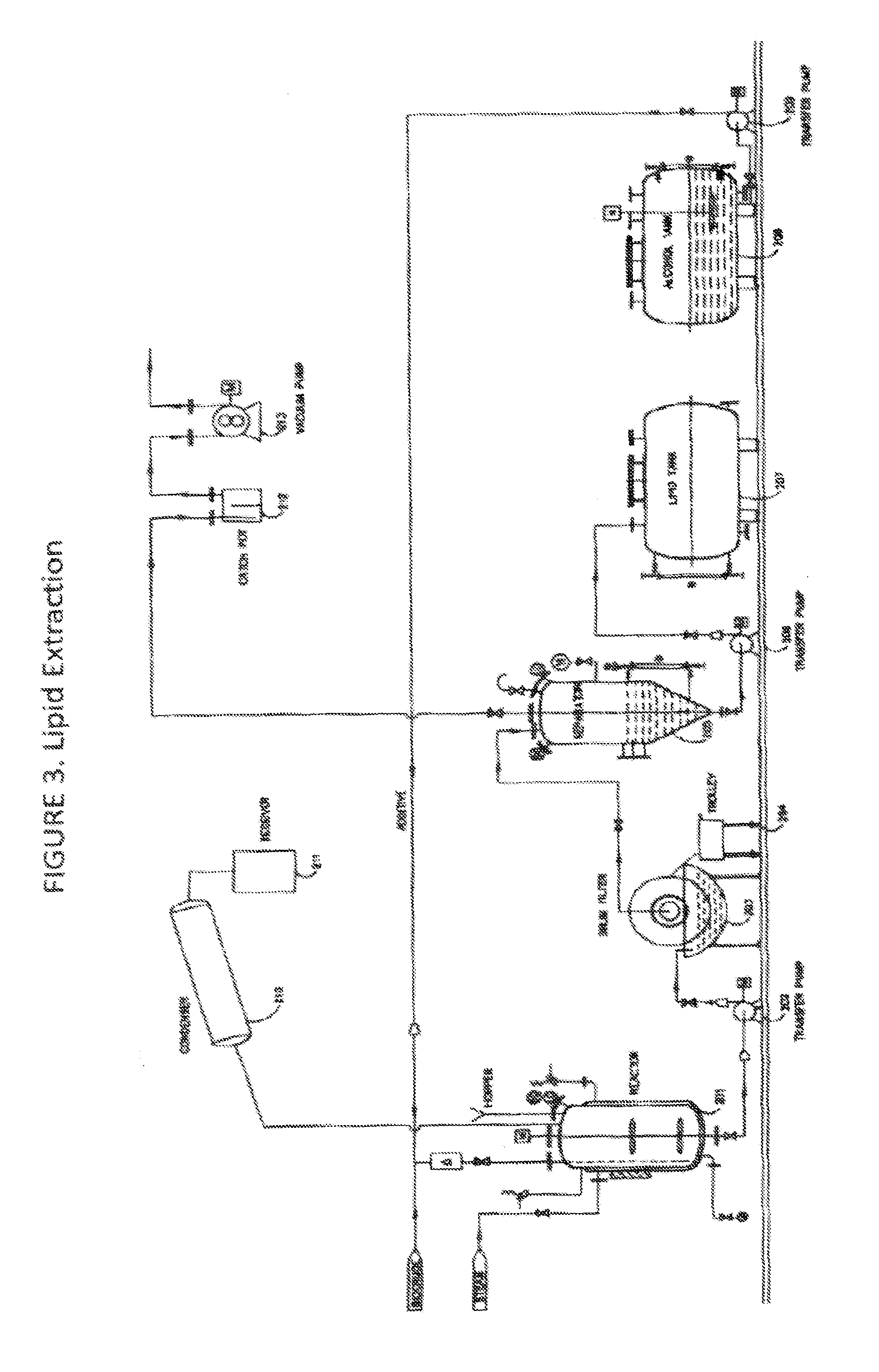Methods for production of algae derived oils
a technology of polyunsaturated fatty acids and production methods, which is applied in the direction of filtration separation, multi-stage water/sewage treatment, separation processes, etc., can solve the problems of ineffective conversion of ala into the more useful longer-chain dha and epa in the body, increase in healthcare costs, and increase in consumer interest in preventive healthcare. , to achieve the effect of facilitating stress conditioning of algae, facilitating harvesting, and facilitating algae growth
- Summary
- Abstract
- Description
- Claims
- Application Information
AI Technical Summary
Benefits of technology
Problems solved by technology
Method used
Image
Examples
example 1
[0054]For the extraction of lipids from a dried biomass, 25 kilograms of dried algae is loaded to the reaction vessel followed by 50 kilograms of ethanol. The reactor is heated to 80° C. with constant stirring. After one (1) hour, the heater is turned off and the reaction is allowed to cool to 45° C. The mixture is passed through a vacuum drum filter where the solids are separated from the liquid. The liquid containing total lipids were evaporated to dryness under vacuum and the residue was dissolved in 1 liter of acetone. The acetone fraction was subjected to evaporation under nitrogen and the PUFA enriched residue was collected.
PUM
| Property | Measurement | Unit |
|---|---|---|
| Fraction | aaaaa | aaaaa |
| Temperature | aaaaa | aaaaa |
| Fraction | aaaaa | aaaaa |
Abstract
Description
Claims
Application Information
 Login to View More
Login to View More - R&D
- Intellectual Property
- Life Sciences
- Materials
- Tech Scout
- Unparalleled Data Quality
- Higher Quality Content
- 60% Fewer Hallucinations
Browse by: Latest US Patents, China's latest patents, Technical Efficacy Thesaurus, Application Domain, Technology Topic, Popular Technical Reports.
© 2025 PatSnap. All rights reserved.Legal|Privacy policy|Modern Slavery Act Transparency Statement|Sitemap|About US| Contact US: help@patsnap.com



